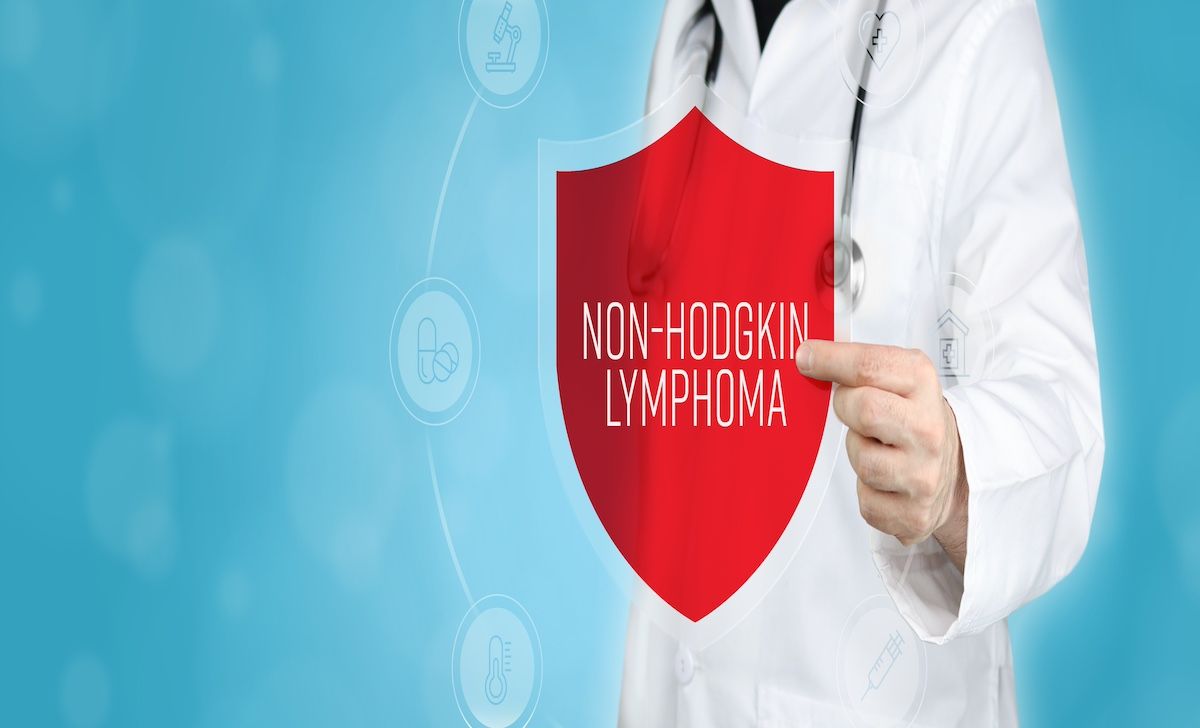Fitness
Study to Quantify Non-Hodgkin Lymphoma Risk in HIV

Researchers, based in China, are seeking to quantify the risk of non-Hodgkin lymphoma (NHL) in patients living with HIV, and to evaluate HIV’s contribution to NHL incidence, according to a paper published in The BMJ.1
Patients living with AIDS are 400 times more likely to be diagnosed with high-grade NHL and 15 times more likely, low-grade NHL vs the general population | Image Credit: MQ-Illustrations-stock.adobe.com
“Despite the strong association between HIV infection and NHL, the contribution of HIV to [the] burden of NHL across time and region has not been comprehensively reported and quantified yet,” the authors stated.
They plan to quantify the association between HIV and NHL by calculating effect values and corresponding 95% CIs for NHL among populations living with HIV compared with those without NHL. They will use population attributable fraction (PAF) modeling analysis based on pooled risk ratio and age-specific disability-adjusted life-year (DALY) and HIV prevalence data (15 years or older) from 1990 to 2019, at global, regional, and country levels. They expect to calculate the PAF, HIV-associated DALY number, and age-standardized rate to quantify the burden of HIV-associated NHL. The authors also plan to estimate the degree of HIV contributing to the burden of NHL using PAF modeling analysis.
To acquire data, the researchers plan to PubMed, Embase, Cochrane Library and Web of Science using the keywords non-Hodgkin lymphoma, human immunodeficiency virus, Burkitt lymphoma, follicular lymphoma, and diffuse large B-cell lymphoma (DLBCL). They will limit their search to English-language articles but will accept results from any location or time, up to March 31, 2023.
“Considering the global impact of HIV-associated NHL, we believe that conducting research on estimating the global burden of the disease can provide valuable insights for developing targeted prevention and control strategies, thereby achieving significant benefits,” the authors wrote.
NHL is estimated to cause 20,140 deaths in the US in 2024, equivalent to 3.3% of all US cancer deaths this year.2
Patients who have AIDS are 400 times more likely to be diagnosed with high-grade NHL and 15 times more likely to be diagnosed with low-grade NHL compared with the general population, according to a population-based review cited in the study that examined data from the US, Australia, and Italy.
“In addition, certain subtypes of NHL have been found to be associated with HIV infection. Another multicohort study conducted in Europe revealed a higher incidence of NHL among individuals with HIV, regardless of whether they received combination antiretroviral therapy (cART) treatment,” the authors wrote. “Although the introduction of cART in the late 1990s has significantly reduced the incidence of NHL, the USA alone recorded 74,680 new NHL cancer diagnoses and 19,910 NHL-related deaths in 2018. Meanwhile, the high burden of HIV infection in South Africa has contributed to an increased incidence of plasmablastic lymphoma.”
The study cited the following statistics: The most common subtypeS of NHL in Western countries is DLBCL (roughly 31% of adult cases), follicular lymphoma (22%), and Burkitt lymphoma (2%), according to the World Health Organization. According to the Global Cancer Observatory database of WHO’s International Agency for Research on Cancer, NHL made up 2.8% of total cancers and 2.6% of total cancer-related deaths, ranking IT within the top 10 cancers for both males (8th) and females (10th) in 2020.
Authors observed that roughly 4000 new HIV cases are reported daily and 1100 of these cases affect people aged 15 to 24 years, according to The Joint United Nations Programme on HIV/AIDS.
“Given the close relationship between HIV and NHL, it is crucial to be concerned about the trajectory of the burden of HIV-associated NHL,” the authors wrote. “The complex etiology of NHL, coupled with the accelerated aging process of global population, is expected to further [contribute] to an increase of patients and deaths number for NHL.”
References
1. Chen Y, Sun Z, Sun P, et al. Global and regional burden estimation of HIV-associated non-Hodgkin’s lymphoma: a meta-analysis and modelling analysis protocol. BMJ Open. 2024;14:e075933. doi:10.1136/bmjopen-2023-075933
2. Cancer stat facts: non-Hodgkin lymphoma. National Cancer Institute. Accessed July 3, 2024. https://seer.cancer.gov/statfacts/html/nhl.html










